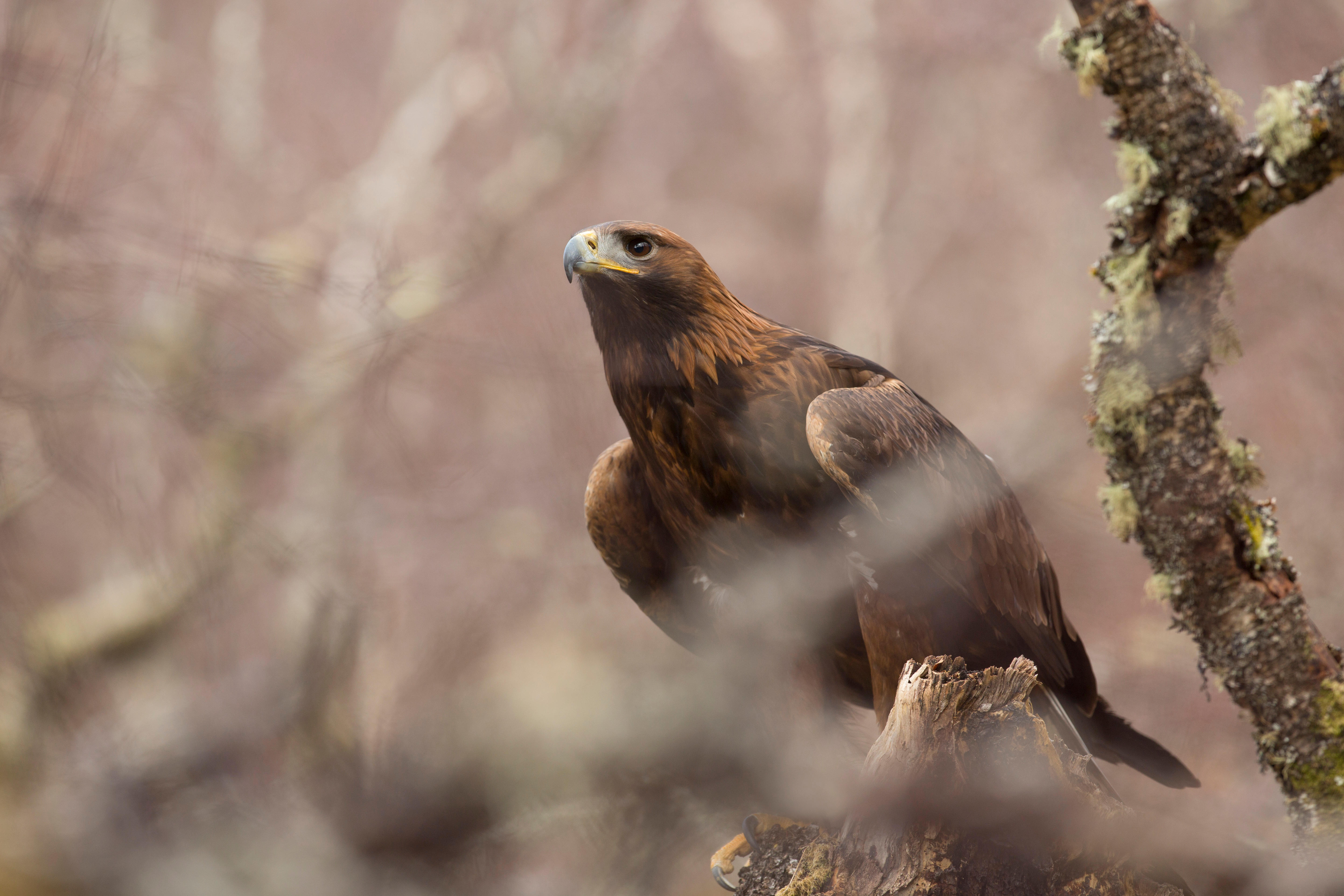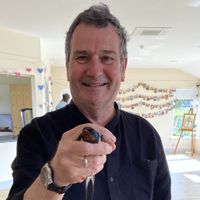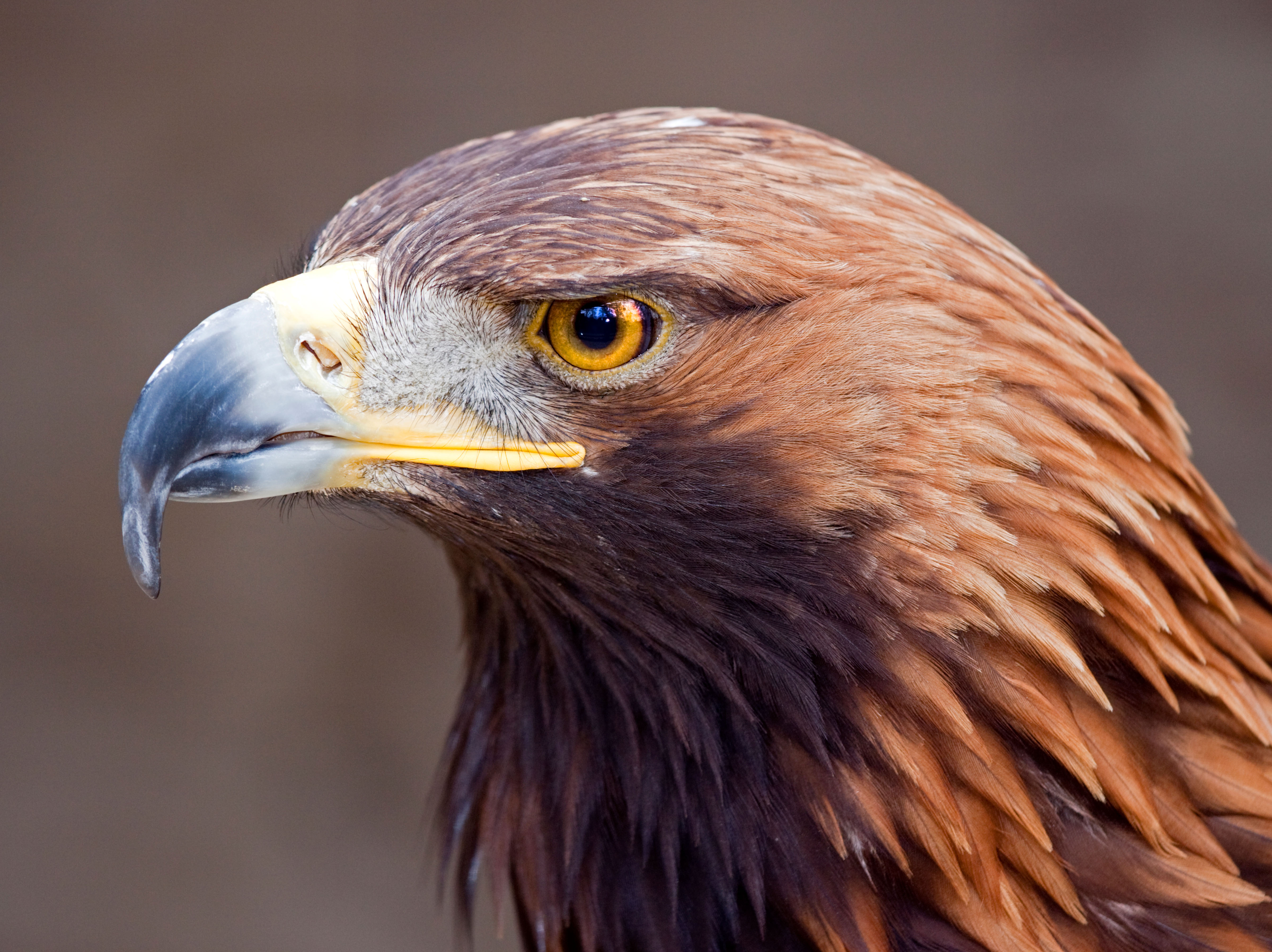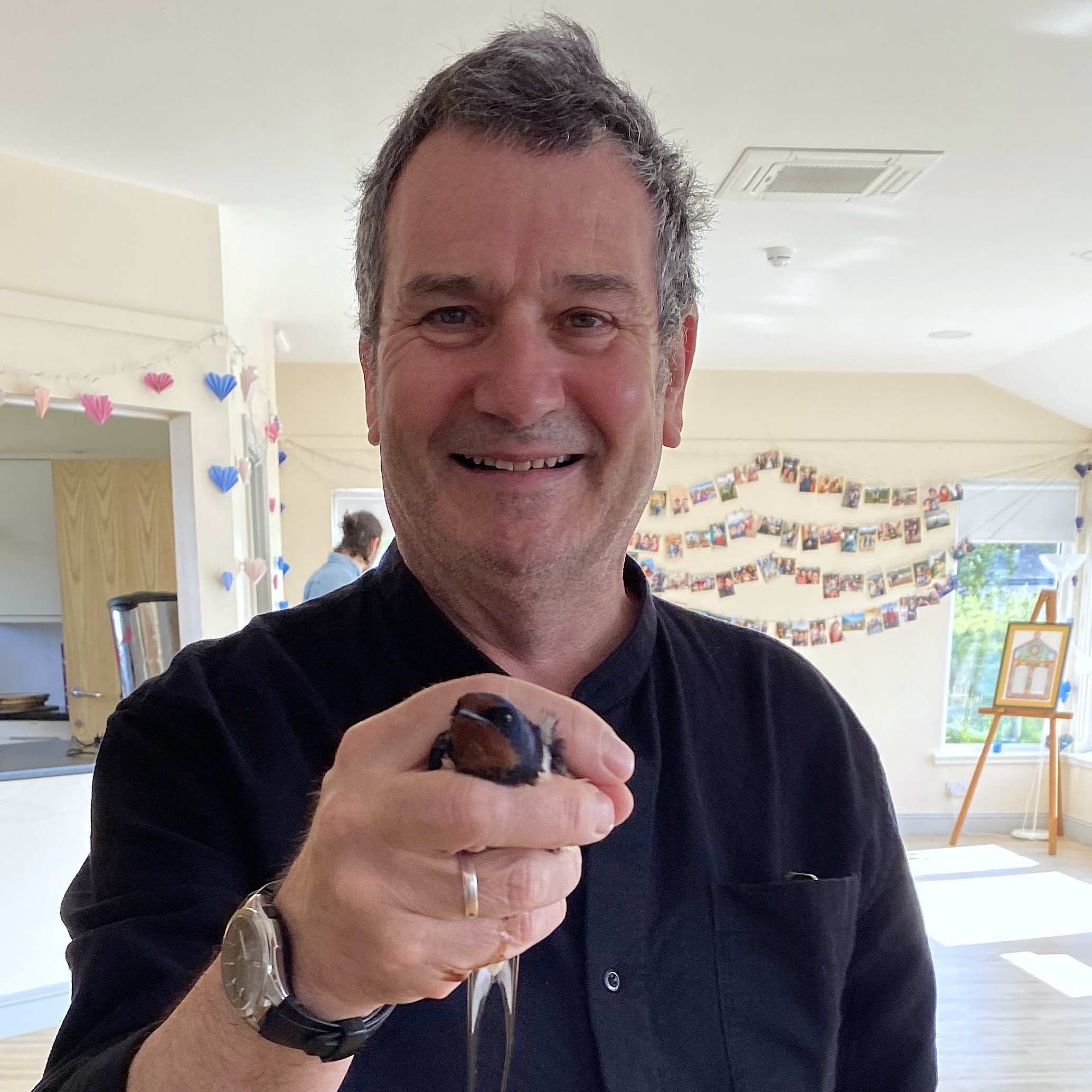The golden eagle: One of the Great British public's favourite birds of prey — but devilishly tricky to identify
We are often so keen to encounter this animal that ambition overrides the accuracy of our observations, writes Mark Cocker.


If you had to name a ‘dream’ bird that the British public would most love to see, I suspect the golden eagle (Aquila chrysaetos) would make our collective top three. Yet, for all its immense size, it can be a rather tricky species to identify. The most reliable feature is the shape of its broad wings, which are long and deeply fingered at their tips. The span is also invariably held in a shallow V above the line of the bird’s body; subadult eagles are easiest, because of contrasting white patches in their tails and mid-wings.
One important part of the identification process is actually a psychological issue in us. We are often so keen to encounter this wonderful animal that ambition overrides the accuracy of our observations — in fact, common buzzards are nicknamed ‘tourist eagles’ precisely because of the countless times people succumb to these temptations. When you do finally encounter the real thing, some inner sense of certainty — almost despite any judgement of your own — wells up. When it is a golden eagle, you just know.
The largest weigh as much as 14lb and have a wingspan of more than 6½ft — nearly twice that of a buzzard. Eagles require an enormous home range of as much as 28 square miles to feed themselves and to underpin their nesting efforts. Given that the owners can live 20 years and add to their eyrie with each nesting attempt, these platforms can be huge and stacked some 6ft deep with fresh branches and sticks. Hunting golden eagles are perhaps Britain’s most impressive terrestrial predator. They can snatch up adult foxes or bear down with lethal force on young roe deer, not to mention ducks, geese and even swans.

In ancient Greece the golden eagle was an emblem for Zeus and Jupiter.
The species has an enormous distribution across the whole of the northern hemisphere and in Kazakhstan, where golden eagles are still used by traditional hunters — they can apparently be trained to tackle wolves. It is not surprising that so impressive an animal has long worked upon our imaginations, to a point where there is almost a second golden eagle dwelling between our ears. This symbolic bird is embedded in myth, story and imagery that spans all Western civilisation. In ancient Greece, then in Rome, it was an emblem for deities-in-chief Zeus and Jupiter. You find gold-painted eagles — the Eagle of St John — adorning pulpits in churches and cathedrals across Britain.
Eagle images flutter on flags in both Austria and Germany. These same symbolic powers have been used to brand and sell everything imaginable, from household insurance to famous rock bands. In Britain, both versions converge most completely in northern Scotland. The regional tourist board has long deployed the bird as a totem for the wild spirit of the Highlands and it is also the place where golden eagles are most encountered. Today, there are roughly 500 pairs, the majority spread between Kintyre in the south-west to Aberdeen and Caithness in the north-east. Skye and several other islands nearby, as well as the whole of the Outer Hebridean archipelago, are further important strongholds.
There is also an increasing if small population in southern Scotland. About 48 birds have been translocated there from elsewhere in the country and all have been radio-tagged to assess their movements and monitor their wider fortunes. What necessitates these complex interventions is the visceral opposition to the species among parts of the rural community. This has been most intense in the central Scottish Highlands: sometimes, old transmitters have been tracked and located at the bottom of rivers, wrapped in lead, and the bird to which it was once attached is presumed illegally killed.

It is thought that the golden eagle may recover some of its breeding territory in England.
Times, however, are gradually changing. When set against their respective dates, even the bare numbers documenting the golden eagle’s population increase — 280 pairs (1976), 420 pairs (2003), 510 pairs (2015) — chart both the fate of one of our most magnificent birds and an evolving process in the human heart.
Exquisite houses, the beauty of Nature, and how to get the most from your life, straight to your inbox.
They reveal, if only by implication, the gradual release of pressure upon the species and its incremental expansion southwards. It is now thought likely that it will recover some of its historically documented breeding territory in England, including perhaps — and here I dream, too — my native Derbyshire.
Mark Cocker 's latest book ‘One Midsummer’s Day: Swifts and the Story of Life on Earth’, is out in paperback.
This feature originally appeared in the June 25, 2025 issue of Country Life. Click here for more information on how to subscribe
Mark Cocker is a naturalist and multi-award-winning author of creative non-fiction. His last book, ‘One Midsummer’s Day: Swifts and the Story of Life on Earth’, is out in paperback. A new book entitled 'The Nature of Seeing' will be published next year by Jonathan Cape.
-
 The pink granite chateau that the Cointreau family built in the Loire Valley is for sale at £3.5 million
The pink granite chateau that the Cointreau family built in the Loire Valley is for sale at £3.5 millionThe great country seats of the Guinness family have an equivalent over the Channel, where the chateau built by the Cointreau family is on the market.
-
 Quiz ahoy! Even these gorgeous mice have been waiting for the Country Life Quiz of the Day, November 21, 2025
Quiz ahoy! Even these gorgeous mice have been waiting for the Country Life Quiz of the Day, November 21, 2025From school reports in South America, it's all in today's Country Life quiz.
-
 Better than Ozempic? 50 years of the Brompton bicycle
Better than Ozempic? 50 years of the Brompton bicycleOwen Wilson, James May and most of the middle-aged men and condescending hipsters you know love them. As the iconic folding bike turns 50 Lotte Brundle hops on one with the company's CEO.
-
 No more froths, no more foams, no more tweezers. Classic dining is making a comeback. Thank god
No more froths, no more foams, no more tweezers. Classic dining is making a comeback. Thank godFrom prawn cocktail and Arctic roll to starched tablecloths and ‘nicotine cream’ on the walls, it’s out with the new and in with the old in the restaurant world
-
 An unfenced existence: Philip Larkin's love of the countryside
An unfenced existence: Philip Larkin's love of the countrysideRichard Barnett pokes at Larkin’s protective carapace of soot-stained gloom and finds a writer with an unillusioned yet tenderly perceptive sense of Nature, in all its beauty and indifference
-
 'It is hard to beat the excitement of watching a peregrine you have trained stoop from 1,000ft, going more than 100mph' — the complicated world of falconry
'It is hard to beat the excitement of watching a peregrine you have trained stoop from 1,000ft, going more than 100mph' — the complicated world of falconryA combination of spellbinding sport and profound empathetic connection, falconry–a partnership in which the bird maintains the upper hand–offers a window into ‘the deeper magic’.
-
 What is everyone talking about this week: More than half the country owns a pet and nearly half our marriages end in divorce — no wonder pet-nups are on the rise
What is everyone talking about this week: More than half the country owns a pet and nearly half our marriages end in divorce — no wonder pet-nups are on the risePet-nups, a formal agreement between couples over what should happen to their pets in the event of a split, are on the rise.
-
 Haute dogs: How fashion’s finest would dress 11 dogs and one very spoilt cat if only they had the chance
Haute dogs: How fashion’s finest would dress 11 dogs and one very spoilt cat if only they had the chanceWe’ve matched some much-loved breeds to the designers that share their history, temperament and vibe — because why not. Illustrations by Tug Rice.
-
 Baby, it’s cold outside (even if you have a natural fur coat): How our animals brave the winter chill
Baby, it’s cold outside (even if you have a natural fur coat): How our animals brave the winter chillWhen the temperature drops, how do Britain’s birds, beasts and plants keep the cold at bay? John Lewis-Stempel reveals Nature’s own thermals.
-
 Retro rubbish: Waste from the 90s unearthed in 97-mile-long beach clean
Retro rubbish: Waste from the 90s unearthed in 97-mile-long beach cleanThe 6,482 volunteers unearthed waste discarded decades ago among the 232,229 pieces of litter recorded during the initiative.
